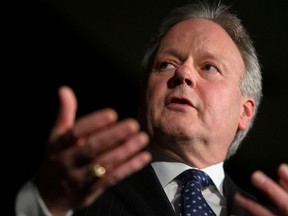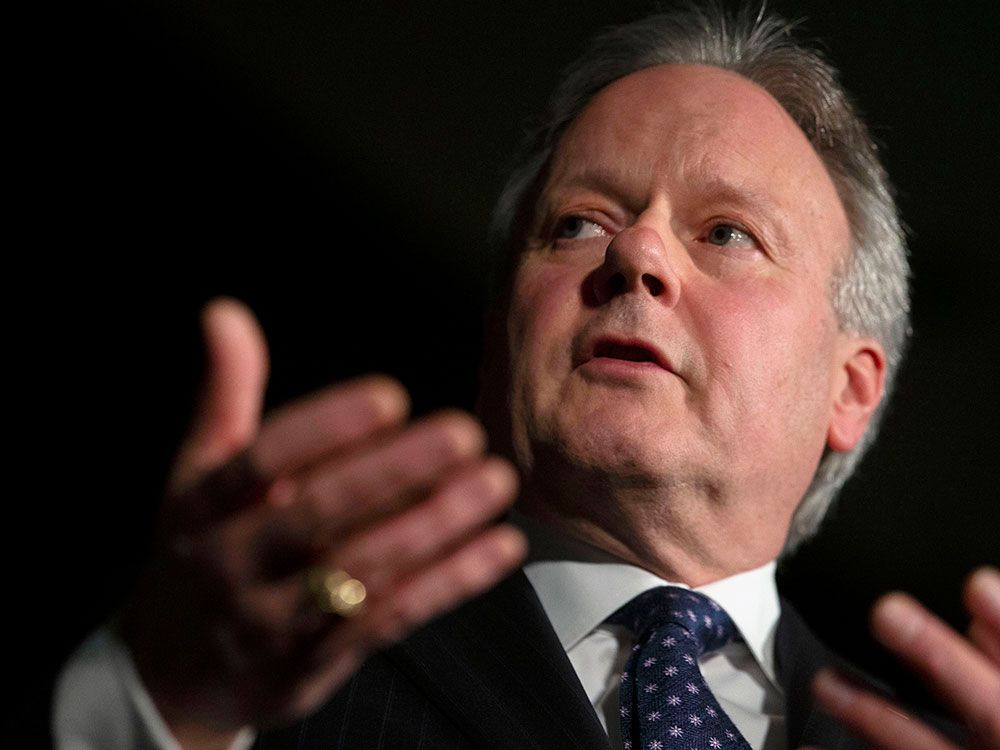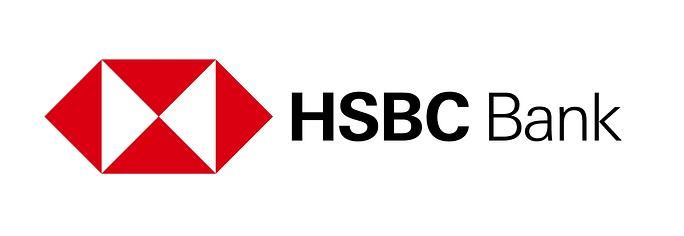And it shouldn’t take a major recession to get there

Article content
When inflation jumped out of the Bank of Canada’s comfort zone in the spring of 2021, governor Tiff Macklem assured Canadians that price pressures would be “transitory.”
Advertisement 2
Article content
Then, in November, when the year-over-year increase in the consumer price index surged to 4.7 per cent, he told CTV News that inflation would be transitory, but “not short lived.” By the time inflation hit a peak of 8.1 per cent this June, he had given up.
Article content
“A year ago we expected inflation in goods prices to moderate as public health restrictions were eased, production ramped up and investment in global supply chain logistics picked up,” Macklem said in remarks to a group assembled by the Halifax Chamber of Commerce earlier this fall. “In hindsight, that turned out to be overly optimistic.”
Article content
It was an embarrassing comedown for Macklem, as it was for his counterparts at the U.S. Federal Reserve and all the other central banks that badly misjudged inflation’s momentum. But some members of “Team Transitory” are keeping up the fight. One of them is Macklem’s predecessor, Stephen Poloz, who was an early voice calling inflation pressures temporary. It’s become unfashionable to do so, but Poloz is sticking to his original assessment, insisting that the point was lost in translation at some point along the way. He said in an interview this week that Canadians can be confident that inflation will return to the Bank of Canada’s target zone of one to three per cent — just don’t expect it to happen overnight.
Advertisement 3
Article content
“‘Transitory’ has been tarnished as a term,” Poloz said after giving a speech at an event hosted by the Portfolio Management Association of Canada in Toronto on Nov. 16. “I mention it to my audiences all the time because I want to remind them that actually transitory never meant that it would go away the next month, or even in a few months.”
A Kobayashi Maru
Communicating these expectations has been something of a Kobayashi Maru — a no-win situation popularized by Star Trek to describe the Starfleet Academy training exercise to test how cadets would respond in an unbeatable scenario. “Nobody ever said central banking was going to be easy,” remarked Poloz, who also happens to be a Trekkie.
Central bankers certainly struggled to get across what they meant by “transitory,” which the Merriam-Webster dictionary defines as a “brief duration” or “tending to pass away; not persistent.” For economists, it meant something a little different.
Advertisement 4
Article content
Poloz, who left the Bank of Canada when his term ended in June 2020 and now serves as a special adviser at law firm Osler, Hoskin & Harcourt LLP, said the persistence of above-target inflation — as measured by the consumer price index — was always going to be determined by dramatic price increases in energy and a few other important items in Statistics Canada’s price basket.
Gasoline prices, the main driver behind October’s headline inflation of 6.9 per cent, are a good example. Prices surged 17.8 per cent in October from a year ago compared with an increase of 13.2 per cent increase in September. That feeds through to all sorts of other prices, especially transportation costs, which increased about 9.5 per cent from October 2021.
Advertisement 5
Article content

But Poloz, informed by his PhD in economics and four decades of practice, doesn’t see what’s happening in oil markets as inflation, per se. He describes it as “just a higher price” that will eventually offset inflationary pressures by making goods and services too expensive, killing demand.
“I know that sounds too cute, but that’s exactly what I mean, because it can’t be perpetually rising because demand destruction will kick in and it’ll fall,” Poloz said. “So, commodities are almost never a source of inflation, they’re a source of higher price. And they’re usually inputs, so they can take a long time to get processed through the system.”
‘A mechanical thing’
How long it takes for these higher prices to fully work through the system depends on how quickly they’ve risen, Poloz said. The logic is that once oil jumps (and gasoline along with it), it pulls up inflation across the board. Prices will then stay elevated for about 12 months before demand destruction kicks in, and inflation ultimately evens out at the central bank’s target of two per cent.
Advertisement 6
Article content
But because it has taken oil around six to nine months to double since the end of 2021, the time it will take for the elevated prices to cool will also take longer. The more time it takes for prices to rise, the longer it takes for demand destruction to bring prices down. Poloz puts this shortest expected timespan in this case to 21 months. “That’s damn near to two years!” he said. “Ordinary people would say, ‘Well, that’s not transitory, two years is a long time!’ I said, `Well, yeah, but transitory always means to economists something that will go away by itself. It’s a mechanical thing. It’s not a behavioural thing.”
Despite the long road ahead, Poloz said taming core inflation won’t be as laborious as many think, provided the country doesn’t see another shock to the economy such as new wave of COVID-19 infections or an escalation of the war in Ukraine. Poloz pointed to headline inflation, which has already eased significantly from its June peak, and is now hovering around seven per cent, as evidence that things are getting better.
Advertisement 7
Article content
Poloz emphasized core measures, which cancel the noise caused by volatile food and energy costs. He said the best way to measure core inflation trends is to annualize the pace of inflation — excluding energy — over the past two and a half years, roughly the duration of the pandemic. By his calculations, the rate comes out to about 3.7 per cent — elevated by recent historical standards, but not the kind of emergency implied by the headline rate.
“That’s why I kind of use that sort of four per cent or less as my benchmark — I think that actually that’s more what the heart of inflation really is,” said Poloz.
‘Things can happen’
Taking this 3.7 per cent trend of core prices back down to the Bank of Canada’s target zone of one per cent to three per cent shouldn’t be much of a challenge, and it shouldn’t take a major, sustained recession to get there, he added.
Advertisement 8
Article content
“We have to, of course, watch and see because other things can happen,” Poloz said, pointing to price pressures that could stem from the Russian invasion of Ukraine. “I’m not making a forecast but basically saying that, given what we know today, the year-on-year comparison will for sure keep falling even if prices that are high today stay high, because the tail end will catch up to them; and then year-over-year (inflation) won’t look like a big number anymore.”
30 years of excellent inflation performance doesn’t evaporate in a few months
Stephen Poloz
The lingering inflation debate between “Team Transitory” and “Team Permanent” comes amid concerns of 1970s style stagflation, prompting concerns that Canada could see a repeat of a decade with high unemployment and rampant inflation. It’s a concern Poloz’s successor, Tiff Macklem, has attempted to assuage numerous times in his speeches.
Advertisement 9
Article content
“A lot has changed since the 1970s,” Macklem said in April after raising the policy rate by a half-percentage point. “Central banks are going to be much more ahead of it than they were.”
Poloz noted that psychology has a lot to do with these fears, and agrees that widespread expectations of sustained high inflation could risk making it something of a self-fulfilling prophecy. While the risks of stagflation loom, Poloz doesn’t put too much weight on the likelihood that it will occur.
“If (inflation higher than seven per cent) becomes a part of their psyche, then we got a problem,” Poloz said. “The longer it lasts, the more likely that risk becomes real, that it’s the ’70s permanent or long-lasting inflation that then requires major disruption in the economy to break that expectation, like a 1981-style recession.
“I’m not buying that as that high of a risk, I think that 30 years of excellent inflation performance doesn’t evaporate in a few months,” Poloz said. “It just doesn’t.”
• Email: shughes@postmedia.com | Twitter: StephHughes95



